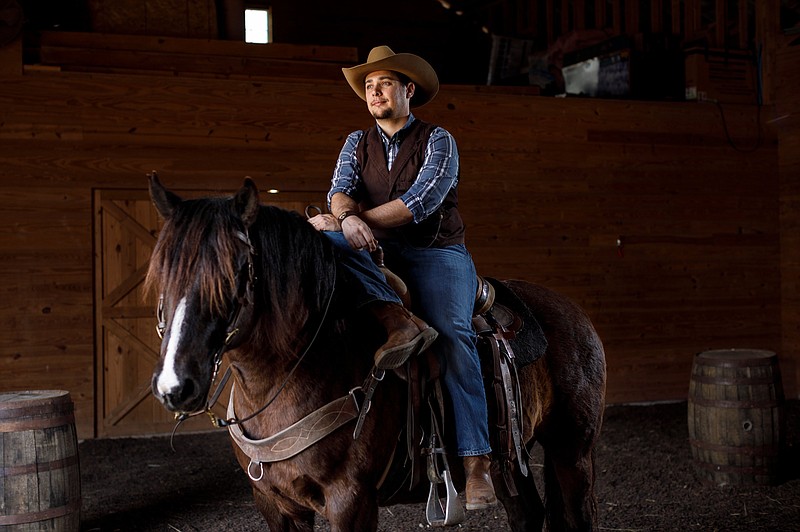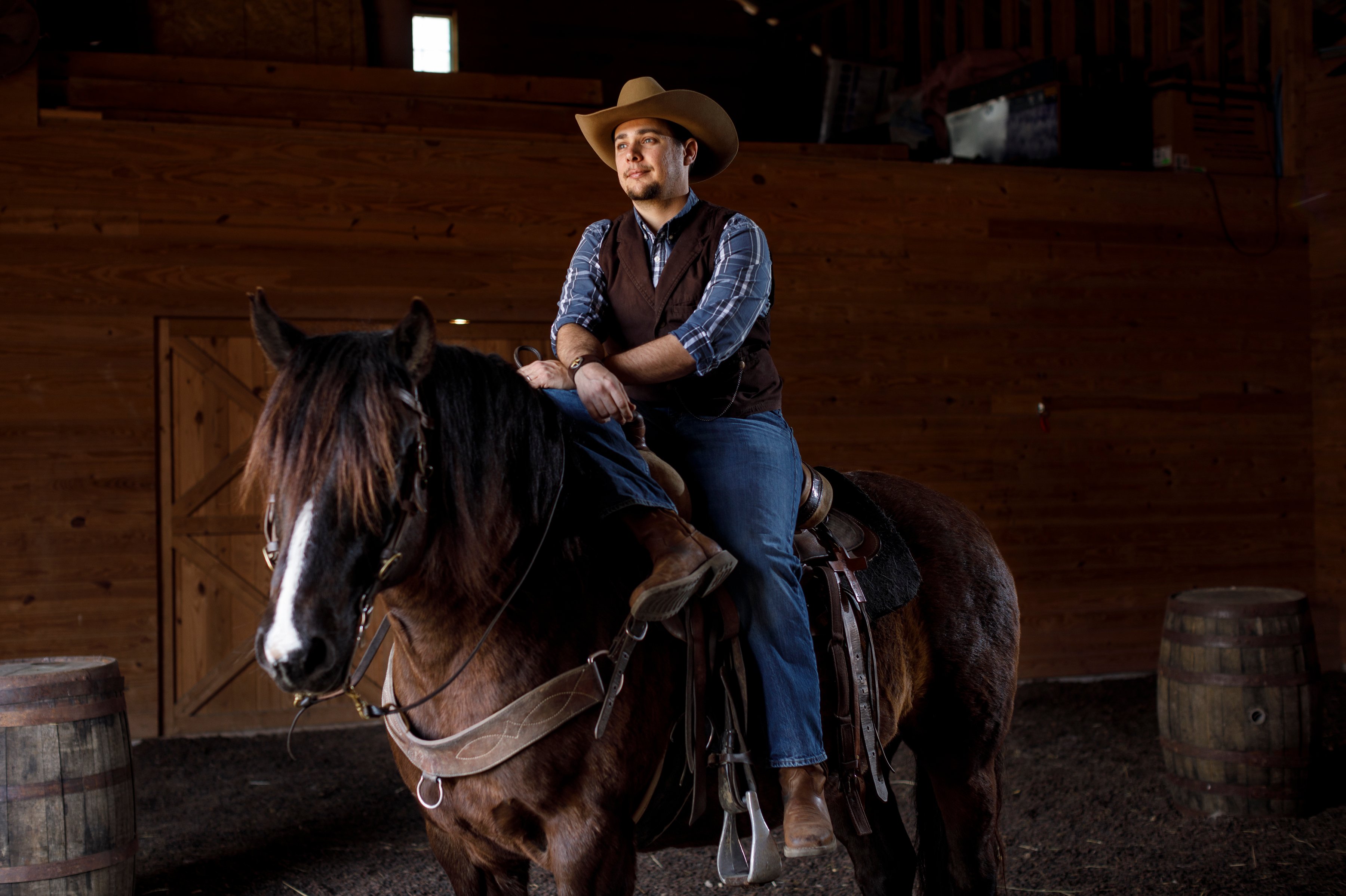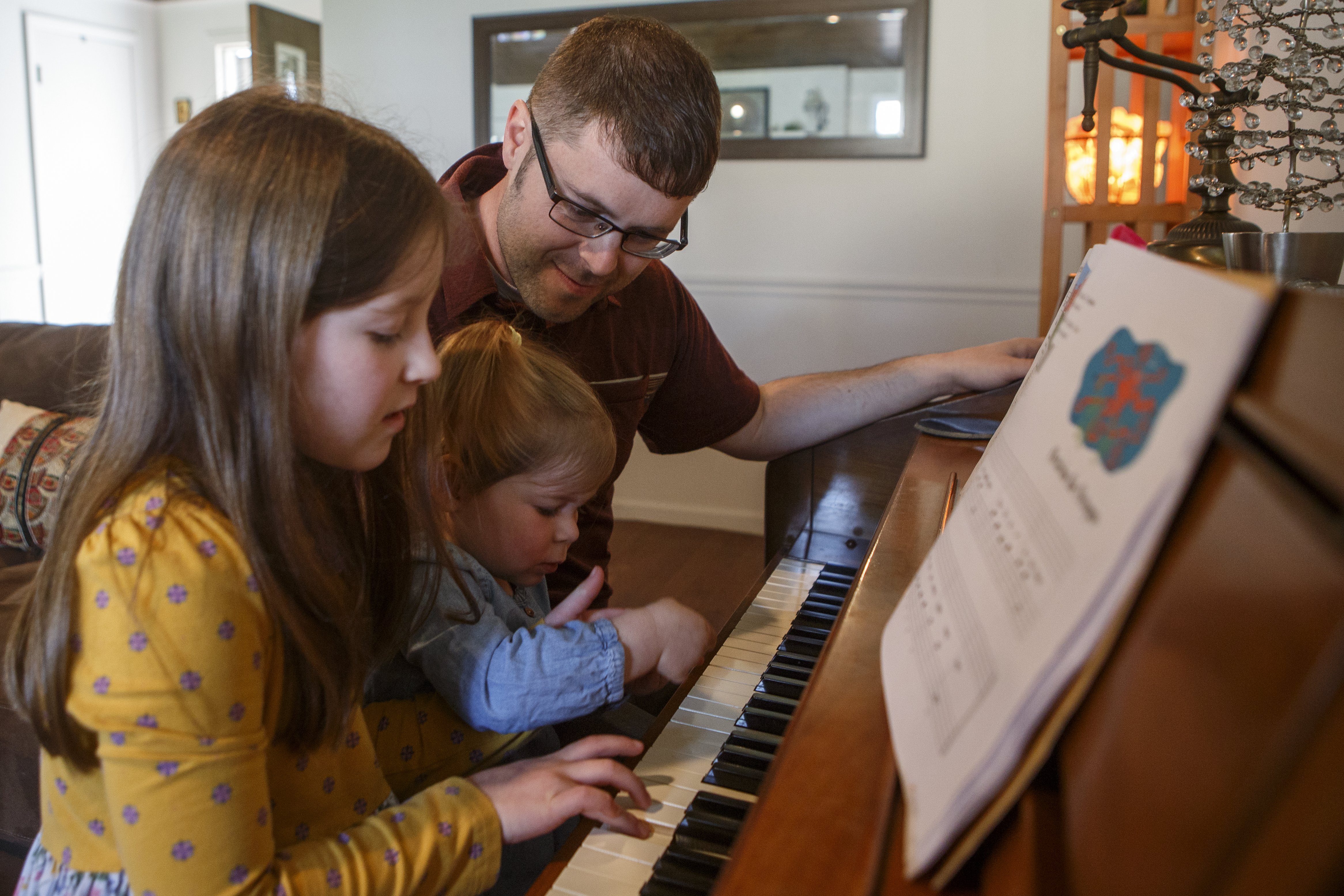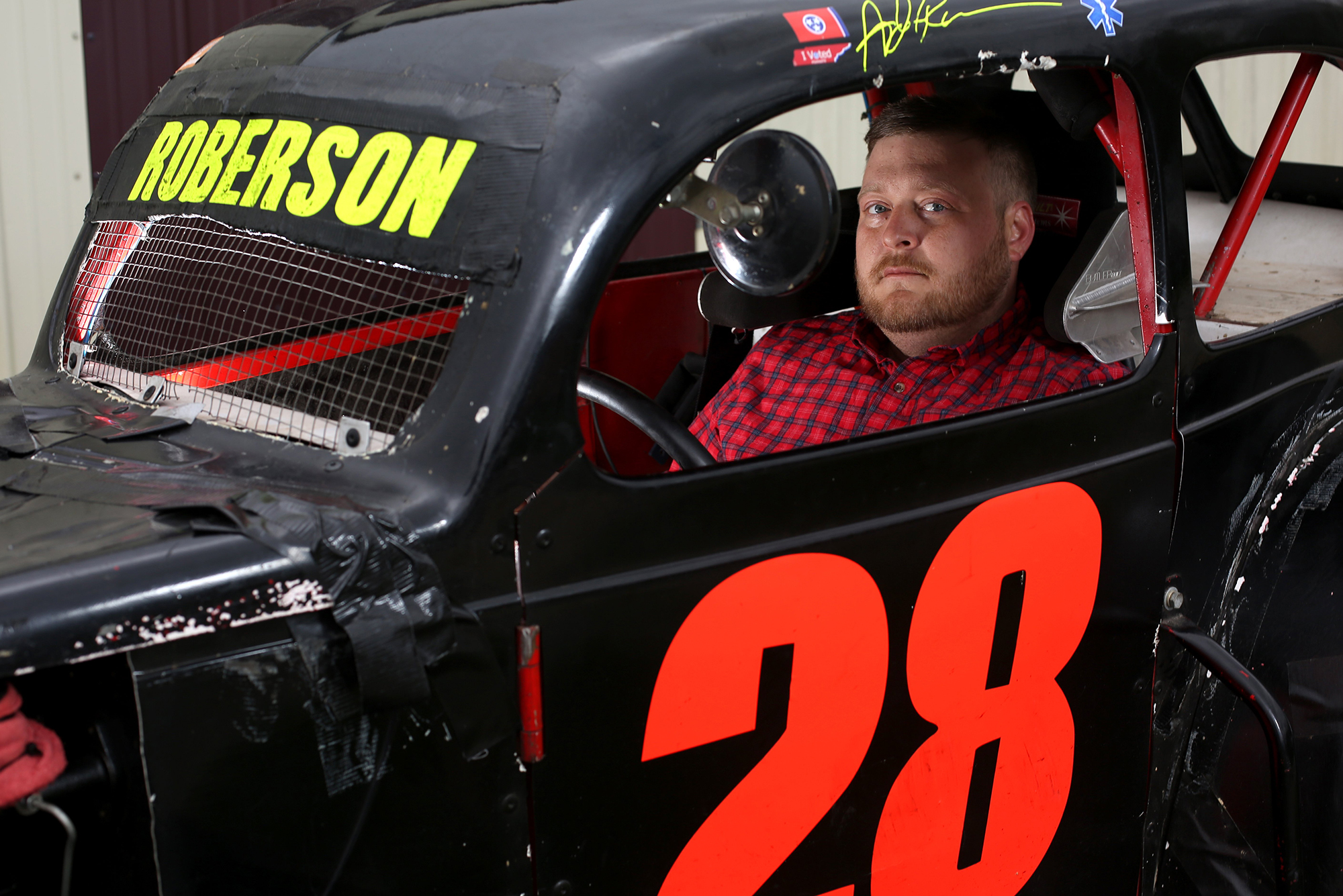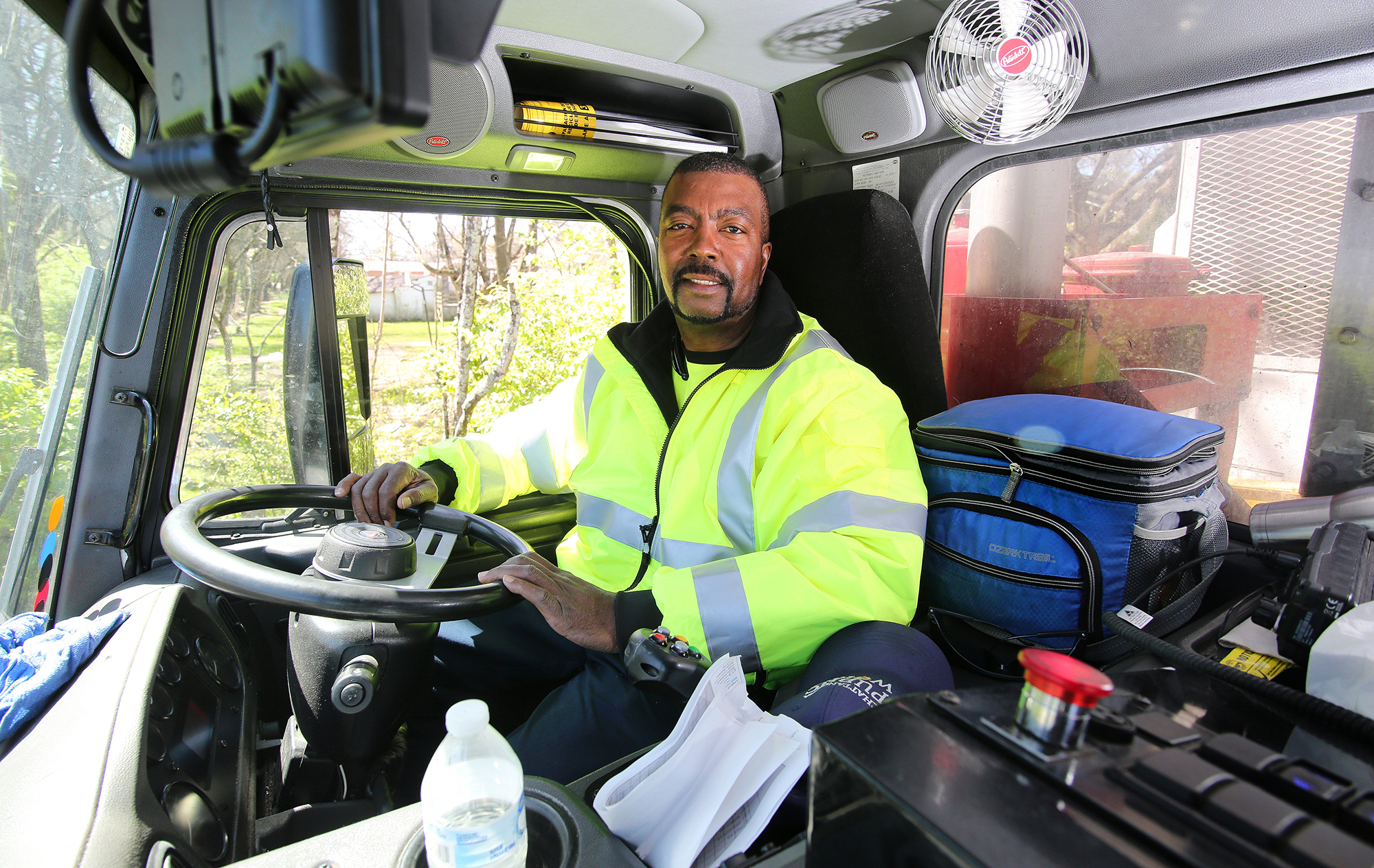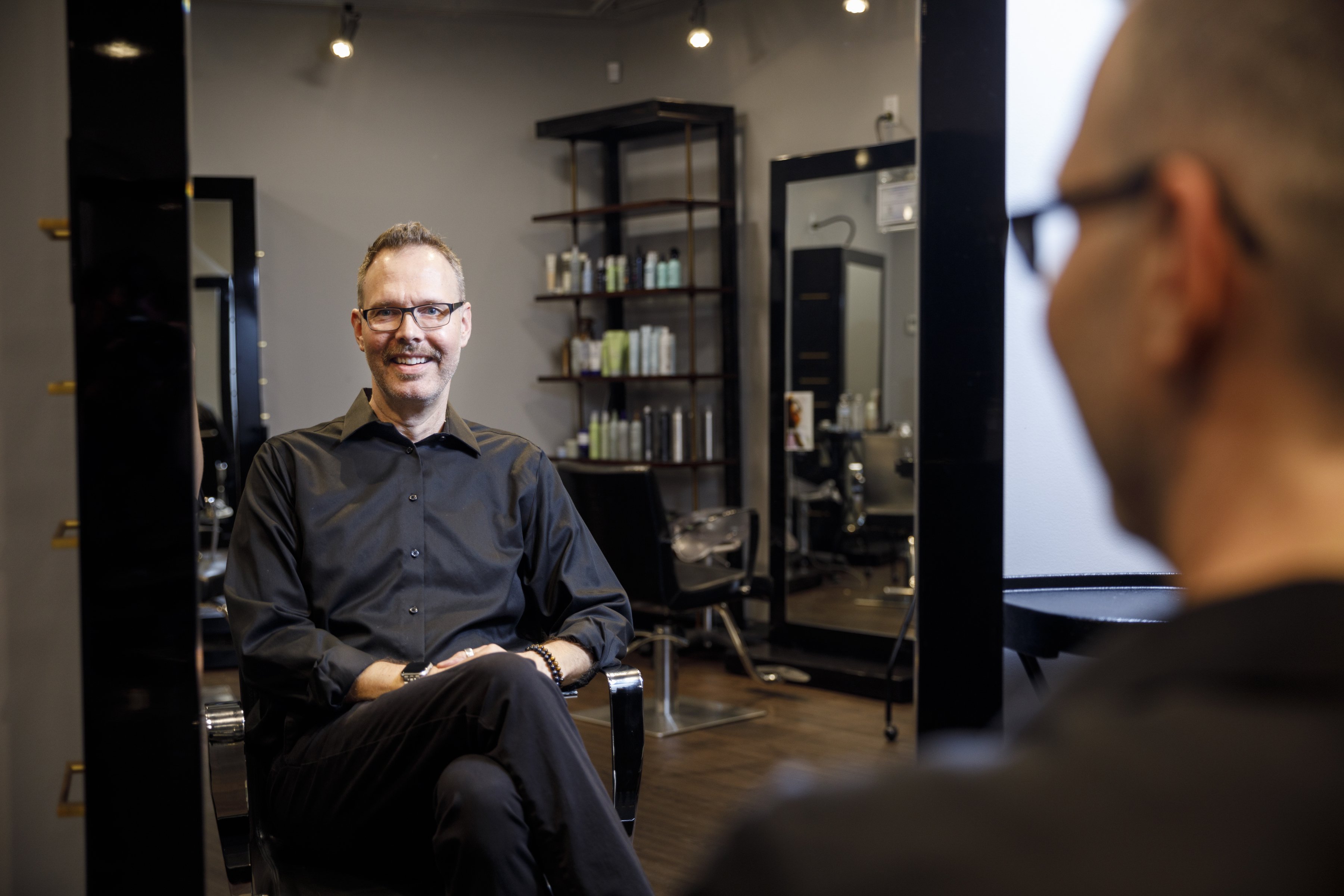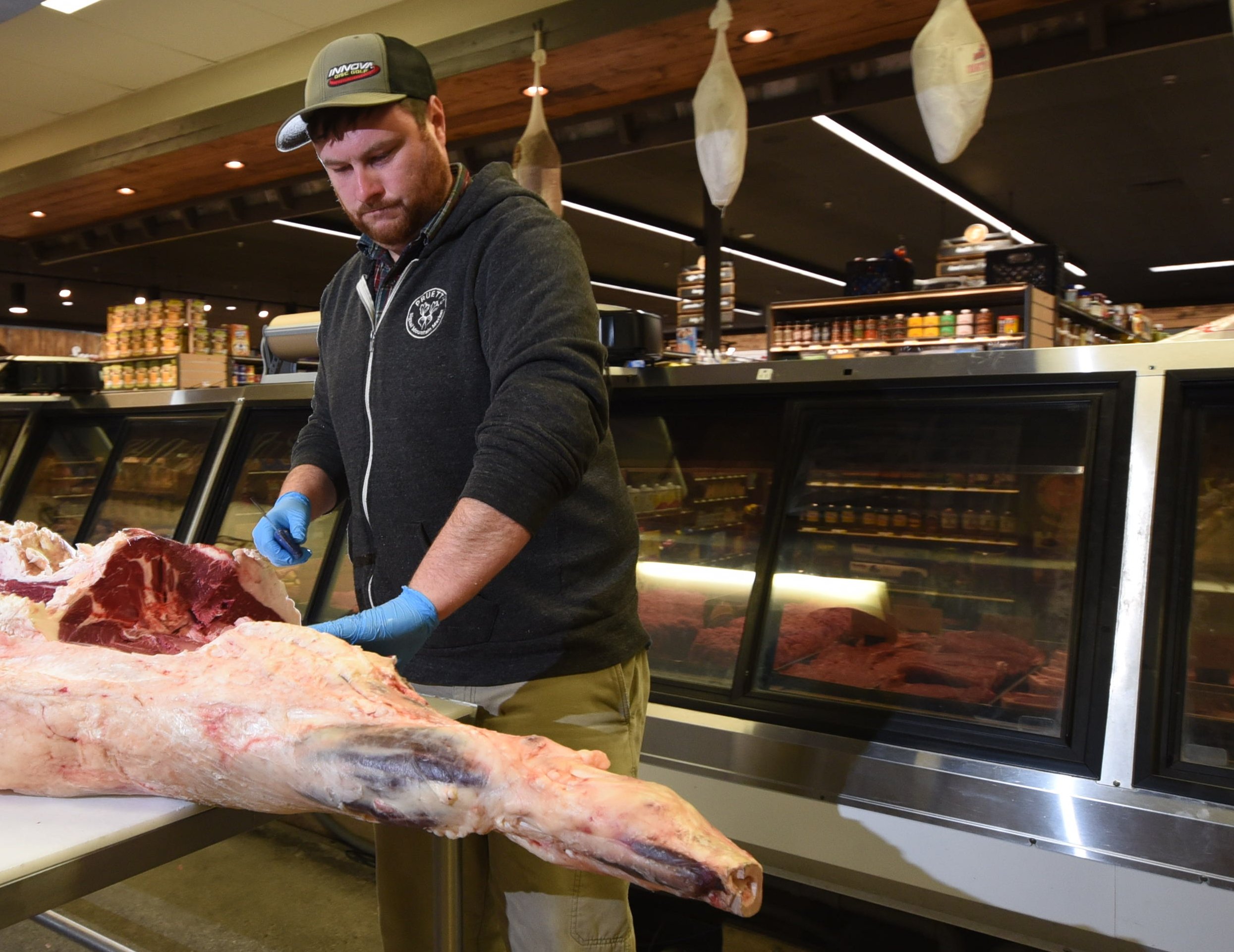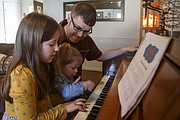Last June, The New York Times asked "Why aren't more men working?" in a story with the same name. The question arose after a Bureau of Labor Statistics survey found that the percentage of working-age men neither working nor looking for work has risen from 14% in 1950 to 31% today.
So what's the deal?
The Times story offers a couple theories. Perhaps it has to do with greater education barriers or social safety nets, i.e. government assistance or Mom and Dad.
Regardless, it's perplexing policymakers. What can be done? Should anything be done?
Here's what we at Chatter know: For those who want to work, there is no shortage of creative ways to make a living in our region. This month, we celebrate the working man. Here, we share the stories of six men, illustrating a diverse and interesting labor force, from a race car driver to a hairdresser to a horse-wrangling youth pastor. These are their motivations for getting up each morning and going to work.
John Perez
Age: 33
Profession: Cowboy and youth pastor
John Perez grew up in Los Angeles, California, without any real connection to horses or the church. When he was 18, he became a Christian, and a year later he began doing missionary work. At age 19, he traveled to India, where he worked with teachers in poor villages. Then, at 20, he went to Honduras and worked more directly with children.
It was a two-week trip that changed the direction of his life.
"I came home, quit my job and sold everything. Within four months I was back down there. I felt like I had this huge abundant blessing by being American. I was given every advantage known to man, so what was I going to do with this blessing? I wanted to help other people," Perez says.
Upon his return to Central America, Perez began to serve at an orphanage located on a horse farm.
"There just weren't enough people to manage that farm well, so I took it over. I didn't know what I was doing with the horsesat all," he says.
The horses, he would learn, were part of a Tennessee-based ministry that uses the animals both to help treat certain types of mental health issues, such as attention deficient disorder, and to teach about the Bible. Eventually, Perez met Tami and Chris Young, the couple who had connected the orphanage with the horses, and who owned a Christian-based dude ranch in Dunlap, Tennessee.
"We hit it off. They taught me everything I needed to know [about the horses]," Perez says.
After five years at the orphanage, Perez returned with the Youngs to Tennessee, where he began work as a wrangler on their ranch. As a wrangler, Perez's job is to instruct ranch visitors on how to care for and ride a horse.
"We wake you up bright and early," he says. "Before you get your breakfast, the horse gets his. This is about an entire horse experience, so the animal isn't just parked out in front of your cabin."
Next, the guests learn to clean their horses, brushing them down, checking their hooves and, finally, saddling them up.
"It's not like you see in the movies. You don't just throw the saddle onto the horse. You have to check it for burrs, little things like that," Perez says.
Finally, after some instruction on how to give commands, the horseback riders head to the trail.
"It's not one of those nose-to-tail rides. It is a different experience. It is you, your horse and the trail," he says.
Along the Sequatchie River, the group stops for lunch and Bible study.
"Wrangling was my full-time job until recently. I'd wrangle, then I'd shower and run over to the church to teach," says Perez, who is now a full-time youth pastor and part-time wrangler.
He believes horses relate to the teachings of God. "There is a special bond when you get on the back of an animal that big, that strong. It has a mind of its own; it could choose to do whatever it wants. But it chooses to be gentle and obedient, and that, to me, is therapeutic."
Joshua Davis
Age: 34
Profession: Stay-at-home dad
In high school, Joshua Davis used to joke that when he grew up he wanted to be a stay-at-home dad.
"I guess I created my own reality," says the father of two daughters, Aria, 7, and Adeline, 2.
Throughout the week, while Davis' wife Michelle is at work as executive director of Chattanooga's LearningRx, Davis stays home not only to care for their children but also to home-school them.
"We try to hit schoolwork two to three times a day," he says. "We used to be able to knock things out during [Adeline's] nap time, but the 2-year-old isn't into taking naps so well anymore."
Now, Davis gives his youngest schoolwork, too, in the form of a coloring book or a blank piece of paper on which to draw shapes. Their lessons last only an hour or two at a time - which is good, because Davis has a long list of other responsibilities.
"That standard model you have in your head for what a stay-at-home mom might doyeah, that's what I do," he says. "Cooking, cleaning and laundry. Laundry is a big part of my day."
Being a stay-at-home dad can be trying. "Everything is not hunky-dory all the time," he says.
But, at the end of the day, Davis knows that a person must create his or her own reality.
"Every morning when I wake up, I don't think, 'Oh, I have to get up and cook breakfast and home-school.' I think, 'I get to get up and cook my daughters a healthy breakfast and teach them new things,'" Davis says.
And it helps that he balances "dad life" with a variety of interests. On the weekends and some evenings, he works part time as an event DJ, musician, bartender, caterer or an Uber or Lyft driver.
"I get complete fulfillment out of being my children's role model every day. It's just nice to have my own things, too," Davis says.
Adam Roberson
Age: 32
Profession: Race car driver, paramedic and volunteer firefighter
Roberson is a jack of many high-intensity trades, but race car driving has been his longest-lived passion. At age 5, he remembers seeing a NASCAR race on TV. "I was instantly infatuated," Roberson says.
That same year, he began racing go-karts at a track in Spring City, Tennessee. Then, when he was a teenager, he purchased his first Legends Car, a type of race car defined as being a miniature, cost-friendly replica of an American automobile built between the 1930s and '40s. Roberson, for example, drives a 5/8th-scale replica of a 1937 Ford Sedan.
"It weighs 1,300 pounds, has 150-ish horsepower, and runs on street tires," he says. "So it's got no weight, a lot of power, and no grip. They're made to be hard to drive. I barely fit in mine."
But the physicality of race car driving isn't necessarily the greatest challenge.
"Technically, all you do is press on the gas and turn left," he says. "But you have to think, if the car's handling badly, how do I adjust my driving style to go faster? How do I pass the cars ahead of me, while preventing other cars from passing me? If a wreck happens, how do I avoid it while still thinking about everyone ahead of me and behind me?"
Success on the track depends on Roberson's ability to make split-second decisions in a high-stress environment - much like he must do as a full-time paramedic with Bledsoe County Emergency Medical Service.
Of course, the big difference being, "When I make a bad decision in a race car, I lose time; that's about it. Make a bad decision in the back of an ambulance? The stakes are much higher."
Marvin Fuller
Age: 59
Profession: Garbage collector
In theory, Marvin Fuller's daily collection route takes eight hours to complete. In reality, 10-hour days are more common, says Fuller, who works in the sanitation division of Chattanooga's Department of Public Works.
"Stuff happens. Your truck gets blocked in. You get flat tires," he says.
And then, of course, there's the people - whom Fuller calls the best part of his job.
"They know what time you're coming, so some people will wait outside and greet you and give you water or cookies and just want to talk," he says.
Children especially, Fuller says, are often there to meet him at the curb. "Kids love trash trucks and when they see us coming, they might run right out the front door at us."
This keeps Fuller vigilant. To be a garbage collector, one must always be alert.
"You have to have eyes all around you. People are in a hurry and kids are kids. You can't just tell a kid, 'I ain't got the time,'" says Fuller. "Every now and then, I'll let them sit in the truck and blow the air horn. It goes straight to your heart. Maybe one day, they'll grow up to be trash truck drivers."
Dennis Hadley
Age: 49
Profession: Hairdresser and salon co-owner
After graduating from East Ridge High School, Dennis Hadley took a job at a movie theater. One evening, a female co-worker came to work with disheveled hair.
"I looked at her and said, 'Are you alright?' Because when you're 18, you don't know better than to say that," Hadley says with a grin.
The girl handed him a curling iron and a can of hairspray she'd brought to get ready to go out with her friends following her shift. "Think you can do better?" she said to Hadley. "Go ahead."
Hadley didn't have any experience styling hair, but he gave it a shot.
"I gave her a 'Farrah Fawcett' and she loved it," Hadley says. "After that, I had to do her hair every day. It came to hand so naturally. I thought, 'I need to go to hair school and start getting paid for this.'"
So that's what he did. Thirty years later, Hadley is co-owner of Chattanooga's Kaleidoscope Salon, where he still cuts, styles and colors hair full time.
Over the decades, a lot has changed in the hair industry, Hadley says. For starters, YouTube has revolutionized the way hairdressers learn.
"When I was in school, information had to be handed down from person to person. If you wanted to learn a new braid or something, you had to be in the same room as a person who knew how to do it," Hadley says.
And just as the internet opened more possibilities for hairdressers, it similarly reshaped hairstyles themselves.
"Back in the '90s, there was, like, two to five hairstyles, and they all came from celebrities. You had the 'Dorothy Hamill,' the 'Jennifer Aniston.' And, of course, the 'Farrah Fawcett.' Now, people just show you a picture on their phones of somebody they follow on Instagram," Hadley says.
Over the course of a normal day, he sees about 10 clients.
"You definitely have to have the right personality for it," says Hadley. "You have to be social, outgoing and a good listener. Whatever story they tell you from that chair is that most important story they have that day. My job is to make their day, to make that person feel good about themselves."
Matt Commander
Age: 30
Profession: Butcher
Matthew Commander's career as a butcher happened by chance. While studying to become a high school science teacher at the University of Tennessee at Chattanooga, he took a part-time job at a grocery store.
"I just needed a job, and they stuck me in the meat department," Commander says.
It wasn't love at first cut. In fact, it wasn't until his then-manager took him to a meat processing plant where Commander finally saw the full scope of meat science.
"It wasn't just about taking meat out of bags. It was about learning to isolate different muscle groups. It was about learning the whole animal, from hoof to mouth," he says.
After that experience, Commander left school to focus full time on learning the meat-cutting trade. For the past five years, he has worked as the meat department manager at Pruett's Market on Signal Mountain. The best part of his job, he says, is working with his hands - and with a fresh product.
"When we get it, only a handful of other people have touched that animal," he says.
From start to finish, breaking a whole cow down into various cuts - rib-eyes, tri-tips, top sirloins or hamburger, for example - takes about four hours.
"You have to do it speedily but also with precision," Commander says. "It truly is an art."
